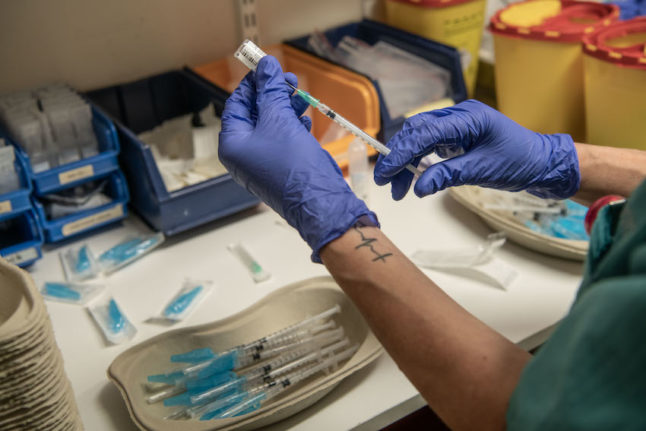SAS
Sweden and Denmark plough billions into SAS rescue
Scandinavian airline SAS on Tuesday unveiled a plan to raise around 12 billion Swedish kronor ($1.3 billion or 1.1 billion euros) in new funds to deal with the impact of coronavirus.
Published: 30 June 2020 13:13 CEST

Flight technicians prepare the last of 25 SAS aircraft for long-term parking at Oslo Airport in Gardermoen, amid the new coronavirus pandemic. Photo: Håkon Mosvold Larsen/NTB Scanpix / AFP
The plan will see the Danish and Swedish state, two of the three largest shareholders, increase their ownership from about 14 percent to 20 percent, and will result in a 14.25 billion Swedish kronor boost to the airline's equity.
In mid-June, SAS said it needed 12.5 billion in new funding as part of its recapitalisation plan, and the government of Sweden said it was ready to inject five billion kronor into the company. The Danish government also announced it was willing to support the ailing airline but did not give a figure.
Carsten Dilling, chair of the SAS Board of Directors, said in a press release that the plan was “a balanced way forward given the magnitude of the recapitalisation and the conditional burden sharing measures”.
Along with planned cost-cutting, he said the funding would enable the company to “withstand this crisis and return as a profitable and sustainable Scandinavian infrastructure provider”.
SAS said it does not expect demand for travel to return to pre-coronavirus levels before 2022.
“We expect demand to remain low both in 2020 and 2021. It won't be before 2022 that it is back again,” the airline's chief executive Rickard Gustafson told Sweden's TT newswire. “That's why we need this money.”
READ ALSO:
Like many airlines, SAS has been hit hard by the Covid-19 pandemic and announced in mid-March it was temporarily laying off 90 percent of its workforce.
Since then, the company has announced it will be cutting 1,900 full-time positions in Sweden, 1,300 in Norway, and 1,600 in Denmark, accounting for some 40 percent of the company's staff.
Shares in SAS were down more than 10 percent on the Stockholm stock exchange following the plan's unveiling.
Url copied to clipboard!


 Please whitelist us to continue reading.
Please whitelist us to continue reading.
Member comments